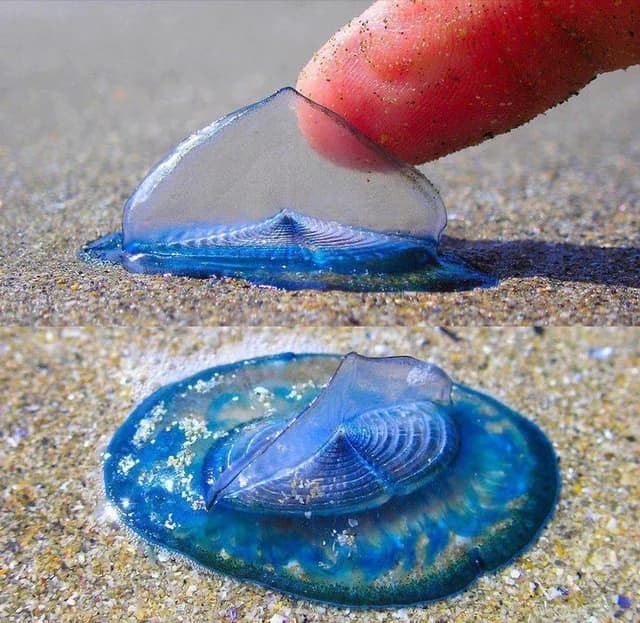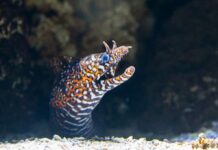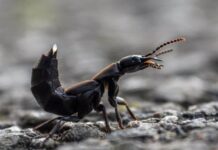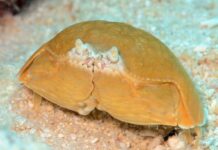What’s blue and floaty? Velella is a close relative of the Portuguese man o’war, and this marine animal is one of an interesting kind. It also goes by other names such as little sail, purple sail, sea raft, and by-the-wind sailor. As Hydroza, the life of this marine creature is quite fascinating, and we will talk a lot about them today. Let’s find out more below, this can be your next favorite floating animal.
1Appearance
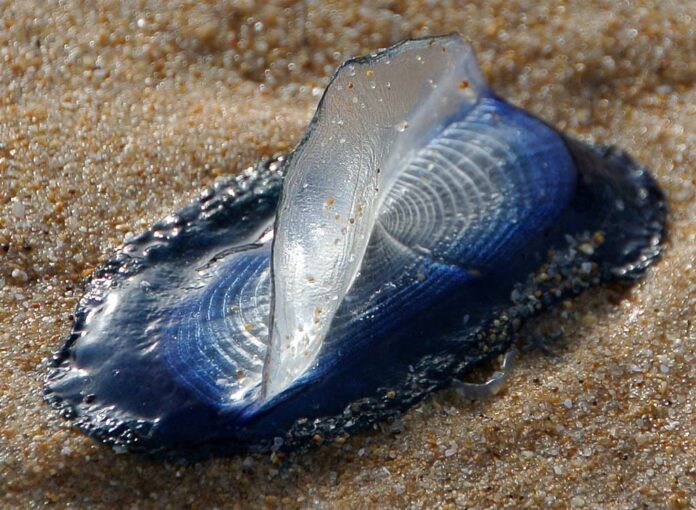
What you see here is a hydroid colony, simply put, it is rather organisms that link together instead of a single animal. The colony is usually smaller than 7 centimeters long; often just 2 centimeters. A velella is deep blue or purple in color, and they have a very fascinating overall appearance and features. Its mouth is in the middle of the underside of its body. On top of the body, it has a flat oval transparent float along with an erect sail that projects vertically. This small still sail catches the wind and propels its body over the surface of the sea. This sail sometimes carries it too far due to certain wind conditions, causing so many of them to be stranded on beaches. When that happens, it also loses its blue pigmentation and just looks bleached white when it is dead.
2Feeding & Habitats
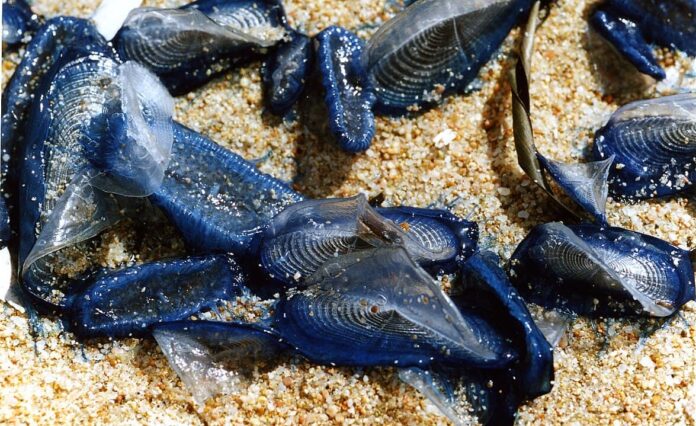
Despite the gorgeous look, velella is carnivorous and it feeds on plankton and small fish that it can catch. It uses its tentacles that hang down in the water to catch its prey, and those tentacles bear cnidocysts aka nematocysts. The cnidocysts contain toxins that can sting small prey but they may have some effects on humans too. Though the toxins are not serious, it is wise to avoid touching your eyes or face after handling this blue creature. Different people will have different reactions to the toxins but itching is common.
Velella lives in temperate and warm waters in all oceans across the world. It has no habitats, if it does at all, the habitat of the velella is the surface of the oceans. This animal never comes close to the ocean bottom or stays in one place at all. Drifting and sailing without a destination, the colony goes wherever the wind takes it. With its small rigid sail projecting into the air and catching the wind, a velella usually moves downwind. And since many colonies travel in the same directions, mass stranding can be hundreds of kilometers along the beaches.
Related Post: Rare Animals With Blue Colors

